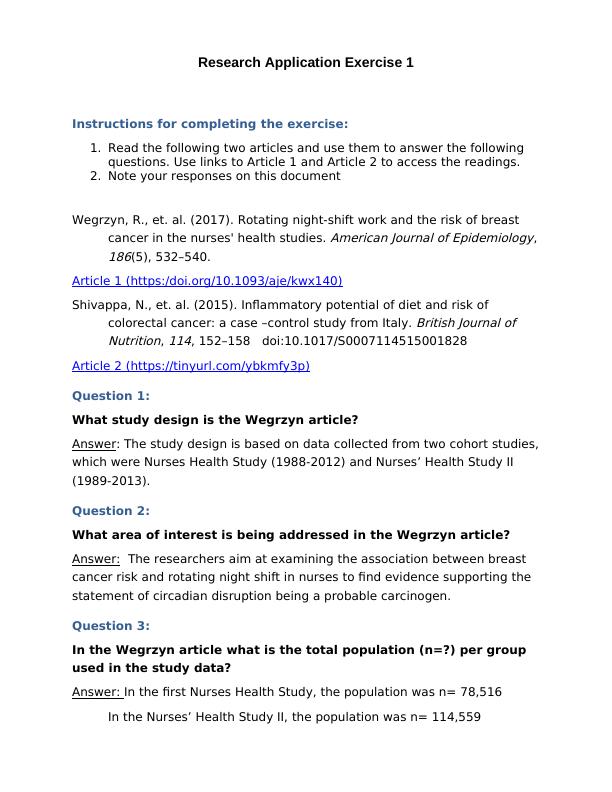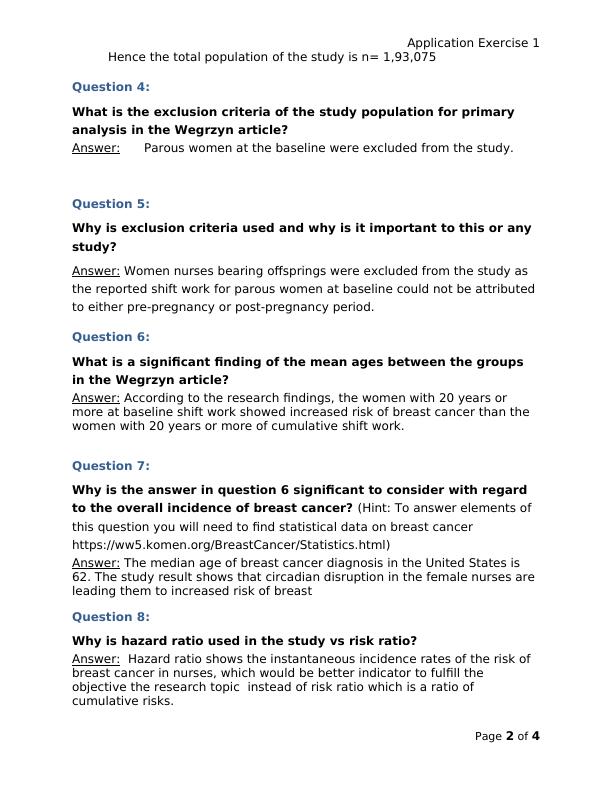Research Application Exercise - Question Answer
Answering questions based on two research articles.
4 Pages897 Words13 Views
Added on 2022-08-20
Research Application Exercise - Question Answer
Answering questions based on two research articles.
Added on 2022-08-20
ShareRelated Documents
End of preview
Want to access all the pages? Upload your documents or become a member.
Pet Ownership and Cancer Risk in the Women's Health Initiative
|1
|693
|27
Introduction to Epidemiology
|10
|2887
|18
401076 Introduction to Epidemiology
|10
|3489
|191


